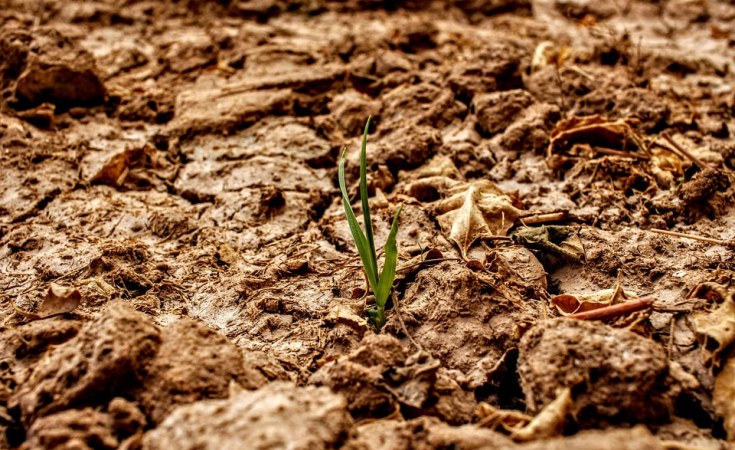The Horn of Africa is facing a severe drought following the worst performing rains in 73 years and five successive failed rainy seasons. A sixth rainy season is forecast to also fail in April/May 2023. The frequency and severity of drought is increasing, making it harder for people to recover between shocks. The long-term outlook indicates continued drought risks for the region. The impact of the drought in the Horn of Africa has been severe: More than 36 million people are affected, with more than 20 million in the highest categories of food insecurity, with women and girls disproportionately affected by the direct and indirect impacts of the drought. The immediate challenges of the humanitarian crisis are the increasing numbers of people in need of food aid, shelter in refugee and Internally Displaced People (IDP) camps, and the imperatives of providing them with Water, Sanitation and Hygiene (WASH), health, and education services while ensuring their protection.
The root cause of the crisis is a lack of access to water for communities and livestock. However, lack of water is an issue of limited access not water availability.
Reversing the impact of climate change on rainfall patterns in the Horn is not possible – future droughts due to limited rainfall are likely to happen. The Horn of Africa however has significant climate change adaptation potential to prevent the impact of future droughts.
A central adaptation opportunity is tapping into the vast groundwater potential of the Horn, with millions of kilometres of groundwater available. Access to water is essential for socio-economic development and livelihoods of communities across the arid and semi-arid regions of the Horn. Both pastoralists and farmers require better access to sustainable water sources if agricultural production is to be improved sufficiently to support likely population growth of both people and livestock. Groundwater access has the transformative potential for catalysing sustainable development in the Horn. Learning from the 2015-2016 Horn of Africa response, it was noted that using groundwater and mechanized water transferal pipeline schemes are 50 times cheaper and then utilizing birkhas/rainfed/shallow water supplies that are supplemented by water trucking.
Communities in the Horn of Africa, particularly in its borderland regions, are off track to achieve Sustainable Development Goal 6: Clean Water and Sanitation.
Investing in climate resilient groundwater in the Horn of Africa
In the Horn of Africa, there are over 40 million people who live along border areas with little to no water infrastructure development. Women are specifically affected more by lack of water because they spend more hours looking for or fetching water. On the long term, securing their demand for water will require a shift on how water is harvested for livestock, farming and domestic use.
For development stakeholders in the Horn region, a focus on innovative groundwater investigation using radar and satellite technologies has proven to be ideal, timely and relevant. The efficacy of techniques such as the Three Phase Methodology (TPM) should be explored further in border areas.
There are numerous benefits of exploring and investing in pre-feasibility analysis and project pipeline development in Africa’s borderlands groundwater; for example, groundwater can reinforce development, enhance resilience and is available in most border areas. In the face of drought, groundwater is protected from evaporation and pollution as well.
This year, as the world marks the world water day, themed as accelerating change to solve the water and sanitation crisis; the UNDP Africa Borderlands Centre (ABC) will develop climate resilient groundwater for agro-pastoralism and domestic use in selected borderland locations in Kenya, Ethiopia, and Somalia. Groundwater identification techniques combined with water drilling/hydraulic solutions and nature based/ecological infrastructure are being developed for the domestic, agricultural, and small-scale industrial needs of the borderland’s communities.
In the Horn of Africa, potential of groundwater is underestimated because it is not sufficiently mapped and categorized. In the recent past, large groundwater potential has been identified in Jesoma sandstone aquifer in Ethiopia with potential for 20,500,000 km3 of water and the Lotikibi Basin Aquifer with a potential of 200,000,000 km3 which is a lake the size of half of Belgium.
Innovative investments in physical infrastructure for groundwater by the Inter-Governmental Authority on Development (IGAD) and Members states with support from the World Bank Groundwater for Climate Resilience (HoAGW4CR) special programme, UNDP Africa Borderlands Centre (ABC) and UNICEF Country teams can therefore generate immense incentives to compliment attainment of water security in the border areas of the Horn region. Work is already ongoing to expand access to groundwater that needs further scaling-up. For example, to provide climate resilient water solutions, the World Bank partnered with UNDP under the Groundwater for Resilient (GW4R) programme to identify groundwater potential and develop its access. The sustainability of the water source, the private sector to construct and the governance to operate and maintain these groundwater schemes is the focus.
Water as a catalyst for sustainable development:
In the early 2000s, it was said that in sub-Saharan Africa, people would walk 3,000 metres to find water, yet the water was available 30 metres below their feet. In 2023, given the exacerbation of natural and human causes, people walk on average of 5,000 metres to find water. Yet the solution to water scarcity still lies 30 metres below their feet!
A 2021 flagship report by the Africa Borderlands Centre on agro-pastoralists in Africa Borderlands noted that the interdependence between water security and attainment of all SDG goals cannot be gainsaid. Groundwater is arguably the critical underlying resource in the Horn region for human survival and economic development. To realize the sustainable nature of groundwater as a catalyst of development, ABC calls on partners to join the regional Groundwater Access Facility (GaFa) and jointly explore groundwater in an efficient and cost-effective manner.


